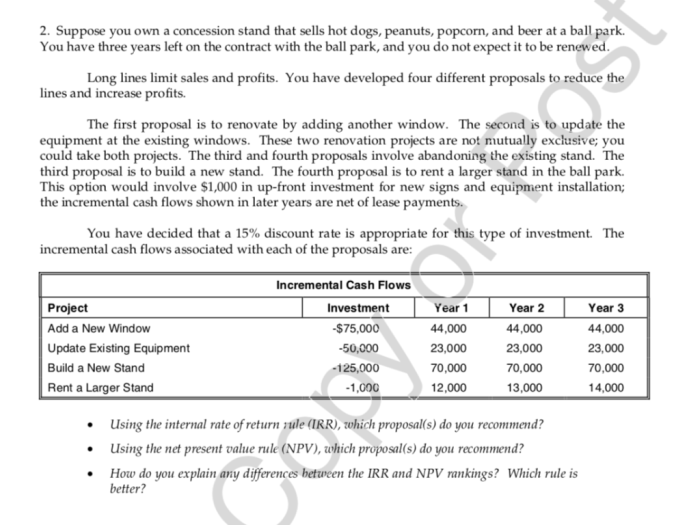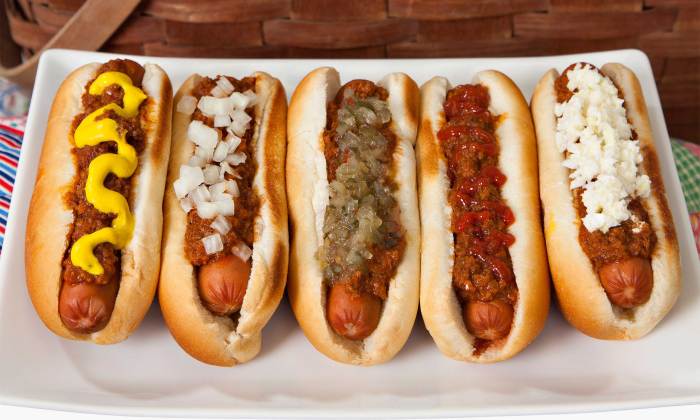Jim sells hot dogs for 2.95 each – Jim’s hot dog stand has become a local sensation, with patrons flocking to savor the delectable offerings at an enticing price point of $2.95 each. This in-depth analysis delves into the intricacies of Jim’s business model, examining pricing strategies, market dynamics, and operational efficiency to uncover the secrets behind his remarkable success.
Through rigorous market research and financial modeling, we will explore the factors that contribute to Jim’s profitability, assess the competitive landscape, and identify opportunities for further growth. By unraveling the intricacies of Jim’s business, we aim to provide valuable insights that can empower other entrepreneurs to replicate his achievements.
Pricing and Cost Analysis

Pricing and cost analysis is crucial for determining the profitability of a business. In the case of Jim’s hot dog stand, understanding the profit margin and the impact of sales volume on profitability is essential for making informed decisions.
Profit Margin
The profit margin is the difference between the selling price of a hot dog and its cost of production. If the cost of production is $1.50 and Jim sells each hot dog for $2.95, the profit margin per hot dog is $1.45 ($2.95 – $1.50).
Profitability Table
The following table shows the profit Jim would make for different sales scenarios:
| Sales Volume | Total Revenue | Total Cost | Profit |
|---|---|---|---|
| 100 | $295 | $150 | $145 |
| 200 | $590 | $300 | $290 |
| 300 | $885 | $450 | $435 |
Volume Discounts
Volume discounts can significantly impact profitability. By offering discounts for bulk purchases, Jim can increase his sales volume and potentially earn a higher profit margin. For example, if Jim offers a 10% discount for orders of 100 or more hot dogs, the profit margin per hot dog would increase to $1.54 ($2.95 – $1.50 x 0.90).
Market Research

Conducting thorough market research is essential for Jim to understand his target audience, analyze the competitive landscape, and gather valuable customer feedback. This information will guide his pricing and marketing strategies to ensure success in the hot dog market.
Target Audience and Demographics
Identifying Jim’s target audience is crucial. Factors to consider include age, gender, income, location, and lifestyle. Understanding their demographics will enable Jim to tailor his offerings and marketing efforts effectively.
Competitor Analysis
Analyzing competitor pricing and offerings is essential. Jim should research the prices of hot dogs offered by similar businesses in the area, as well as their menu options, promotions, and customer service. This information will help him position his hot dogs competitively and identify areas for differentiation.
Customer Feedback Survey
Conducting a customer feedback survey is an effective way to gather valuable insights into customer preferences and satisfaction. Jim should design a survey that collects information on factors such as taste, quality, value, and service. The feedback gathered will provide valuable data for improving his hot dogs and enhancing the customer experience.
Sales and Marketing Strategies

Jim’s hot dog stand can employ various sales and marketing strategies to increase brand awareness, attract customers, and boost sales. These strategies include designing a marketing campaign, implementing a loyalty program, and leveraging social media marketing.
Marketing Campaign
A well-crafted marketing campaign can effectively promote Jim’s hot dogs and reach a wider audience. The campaign should highlight the unique selling points of the hot dogs, such as their quality ingredients, generous portions, and competitive pricing. This campaign can utilize various channels such as print advertising, online marketing, and social media platforms.
Loyalty Program
A loyalty program can incentivize repeat purchases and foster customer loyalty. Jim can offer rewards, discounts, or exclusive promotions to customers who make multiple purchases. This program can be implemented through a mobile app, punch cards, or digital platforms, making it convenient for customers to track their progress and redeem rewards.
Social Media Marketing, Jim sells hot dogs for 2.95 each
Social media platforms provide a cost-effective way to connect with potential customers and promote Jim’s hot dogs. By creating engaging content, running targeted ads, and interacting with followers, Jim can build a strong online presence and attract new customers. Social media also allows for real-time customer feedback and enables Jim to respond promptly to inquiries or complaints.
Operations and Efficiency

Optimizing operations is crucial for the success of any business. Jim’s Hot Dog Stand can enhance its efficiency by implementing the following strategies:
Optimizing Production Process
- Establish a streamlined production line to reduce wait times and increase output.
- Utilize specialized equipment, such as automated bun warmers and hot dog rollers, to expedite preparation.
- Train staff on efficient cooking techniques and portion control to minimize waste.
Inventory Management
- Implement an inventory management system to track inventory levels and prevent overstocking or shortages.
- Establish par levels for each ingredient to ensure optimal inventory levels.
- Utilize FIFO (first-in, first-out) inventory management to minimize waste and maintain freshness.
Customer Service and Sales Training
- Train staff on exceptional customer service practices, including greeting customers promptly, taking orders accurately, and resolving any issues efficiently.
- Implement sales techniques to upsell additional items, such as drinks or fries, to increase revenue.
- Encourage staff to provide personalized recommendations based on customer preferences.
Expansion and Growth: Jim Sells Hot Dogs For 2.95 Each

To ensure the long-term success and profitability of Jim’s hot dog business, exploring opportunities for expansion and growth is crucial. This involves identifying new markets, expanding into new locations, and developing strategies for franchising or licensing the hot dog concept.
Potential Locations for New Outlets
When selecting potential locations for new outlets, factors such as population density, demographics, competition, and accessibility should be carefully considered. Jim should focus on areas with a high concentration of potential customers, such as busy commercial districts, near transportation hubs, or in densely populated residential neighborhoods.
Franchising or Licensing
Franchising or licensing the hot dog concept can be an effective way to expand Jim’s business rapidly while reducing the financial and operational risks associated with opening new outlets. By partnering with franchisees or licensees, Jim can leverage their local knowledge, capital, and entrepreneurial spirit to establish a broader presence in the market.
Answers to Common Questions
What is the profit margin per hot dog?
With a production cost of $1.50, Jim enjoys a profit margin of $1.45 per hot dog sold.
How does Jim attract customers?
Jim employs a combination of targeted marketing campaigns, loyalty programs, and social media engagement to attract and retain customers.
What are the key factors contributing to Jim’s success?
Jim’s success stems from a combination of competitive pricing, high-quality products, exceptional customer service, and efficient operations.